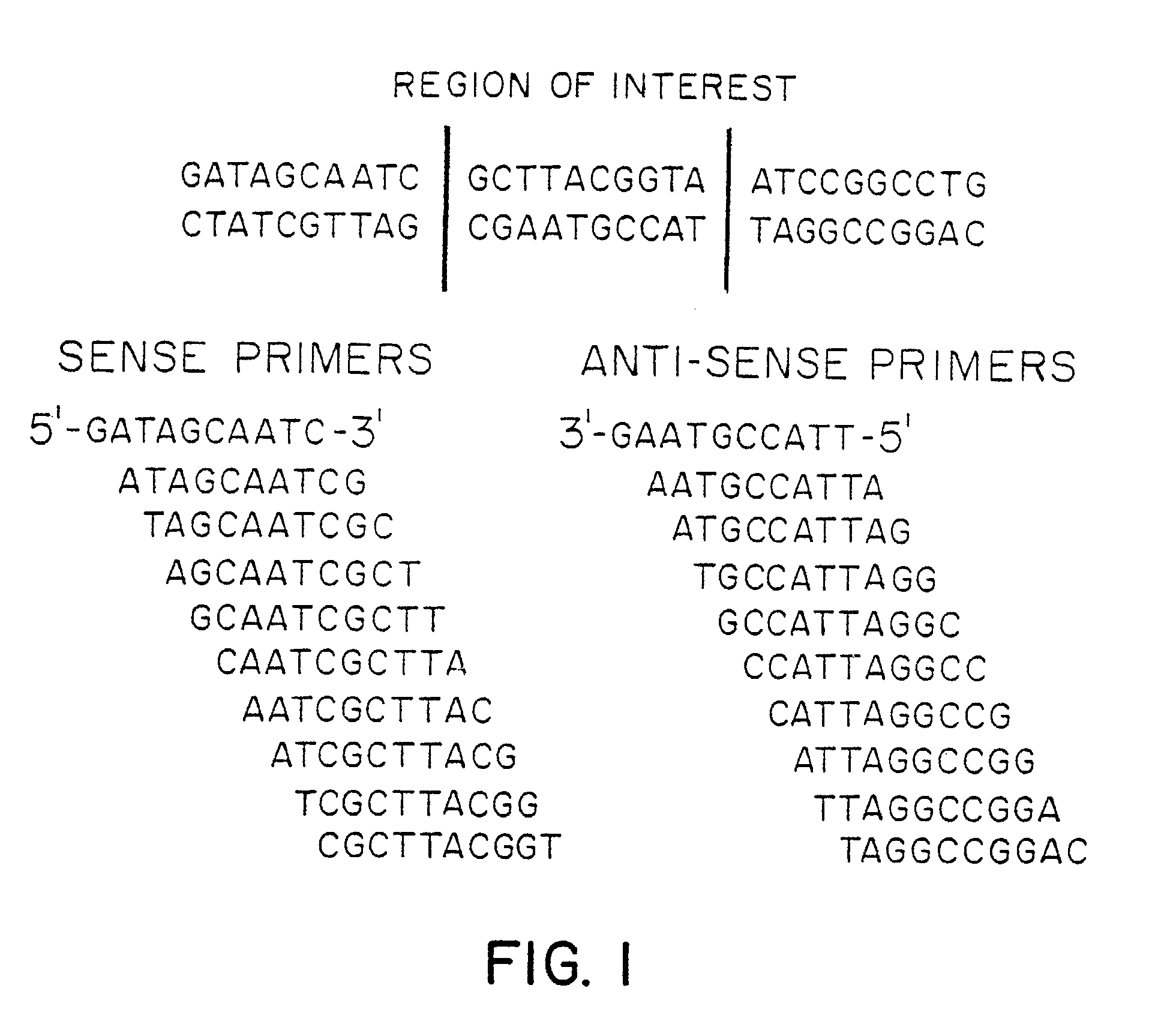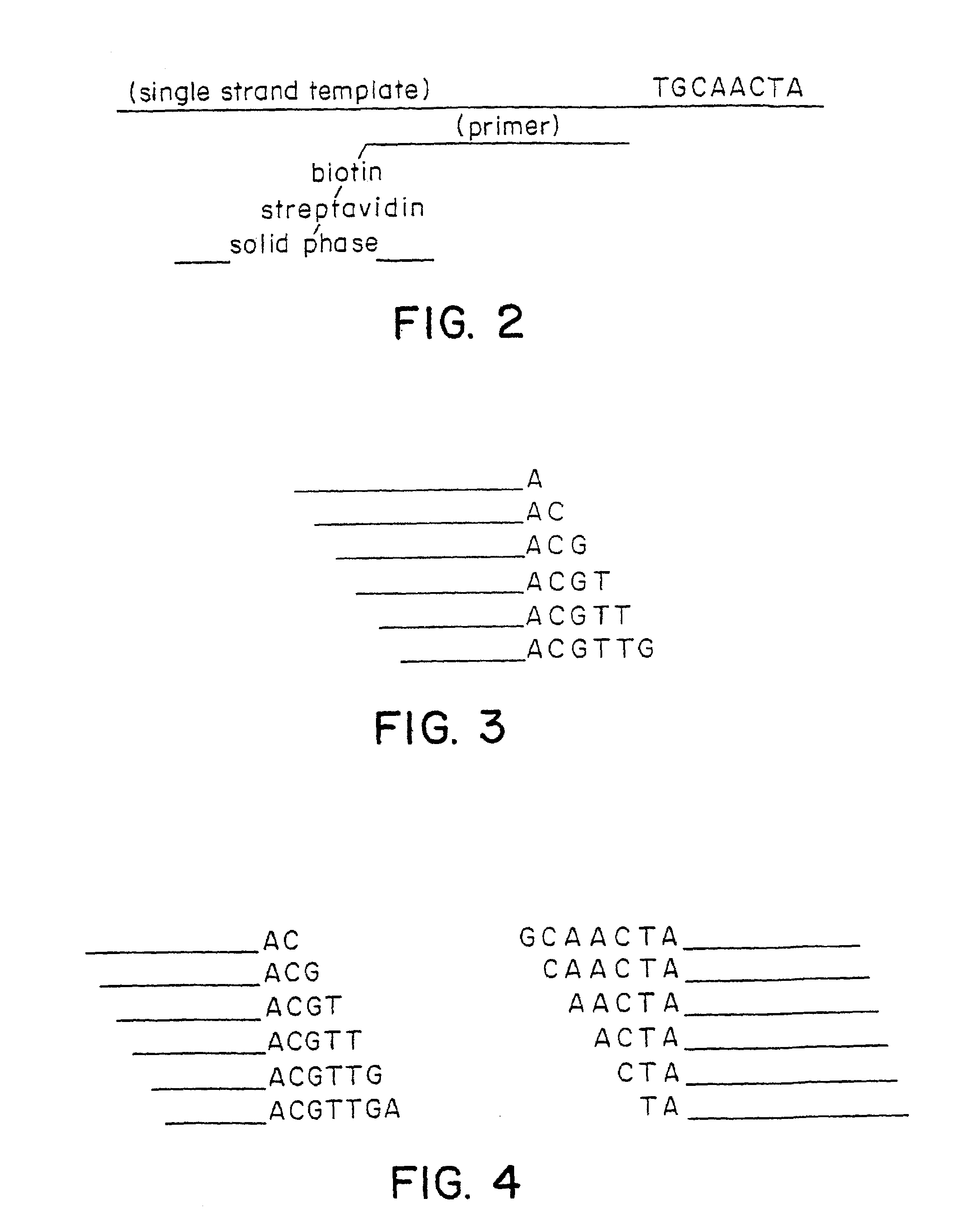Parallel primer extension approach to nucleic acid sequence analysis
- Summary
- Abstract
- Description
- Claims
- Application Information
AI Technical Summary
Benefits of technology
Problems solved by technology
Method used
Image
Examples
example 1
Analyzing the Sequence of a Polynucleotide of Interest Utilizing Free Oligonucleotide Primers
[0045]An analysis of the hypoxanthine-guanine phosphoribosyl-transferase (HPRT) gene (the polypeptide of interest) was conducted for three individuals (Patients A, B, and C).
[0046]A. Obtaining the Polynucleotide of Interest
[0047]The polymerase chain reaction (see Sambrook et al., Molecular Cloning. A Laboratory Manual (2nd Ed, 1989), especially Chapter 14) was utilized to amplify the polynucleotide of interest. During the reaction, one of the two PCR primers was tagged with a biotin group. Following amplification, the single strand template was captured with streptavidin coated magnetic beads. For a 50 μl PCR reaction, 25 μl of Dynal M-280 paramagnetic beads (Dynal A / S, Oslo, Norway) was used. The supernatant of the beads was removed and replaced with 50 μl of a binding and washing buffer (10 mM Tris-HCl (pH 7.5); 1 mM EDTA; 2 M NaCl). The PCR product was added to the beads and incubated at ...
example 2
Analyzing the Sequence of a Polynucleotide of Interest Utilizing Labeled Deoxynucleotides
[0058]An analysis of the hypoxanthine-guanine phosphoribosyl-transferase (HPRT) gene (the nucleotide sequence of a polypeptide of interest) was conducted for three individuals (Patients A, B, and C). The third exon of the HPRT gene was examined.
[0059]Microscope glass slides were epoxysilanated at 80° C. for eight hours using 25% 3′ glycidoxy propyltriethoxysilane (Aldrich Chemical) in dry xylene (Aldrich Chemical) with a catalytic amount of diisopropylehylamine (Aldrich Chemical), according to Southern (Nucl. Acids Res. 20:1679 (1992), and Genomics 13:1008 (1992)). The DNA chips were made by placing 0.5 μl drops of 5′-amino-linked oligonucleotides (50 μM, 0.1 M NaOH) at 37° C. for six hours in a humid environment. The chips were washed in 50° C. water for 15 minutes, dried and used. The annealing reaction consisted of adding 2.2 μl of single-stranded DNA (0.1 μM in T7 reaction buffer) to each gr...
PUM
 Login to View More
Login to View More Abstract
Description
Claims
Application Information
 Login to View More
Login to View More - R&D
- Intellectual Property
- Life Sciences
- Materials
- Tech Scout
- Unparalleled Data Quality
- Higher Quality Content
- 60% Fewer Hallucinations
Browse by: Latest US Patents, China's latest patents, Technical Efficacy Thesaurus, Application Domain, Technology Topic, Popular Technical Reports.
© 2025 PatSnap. All rights reserved.Legal|Privacy policy|Modern Slavery Act Transparency Statement|Sitemap|About US| Contact US: help@patsnap.com



